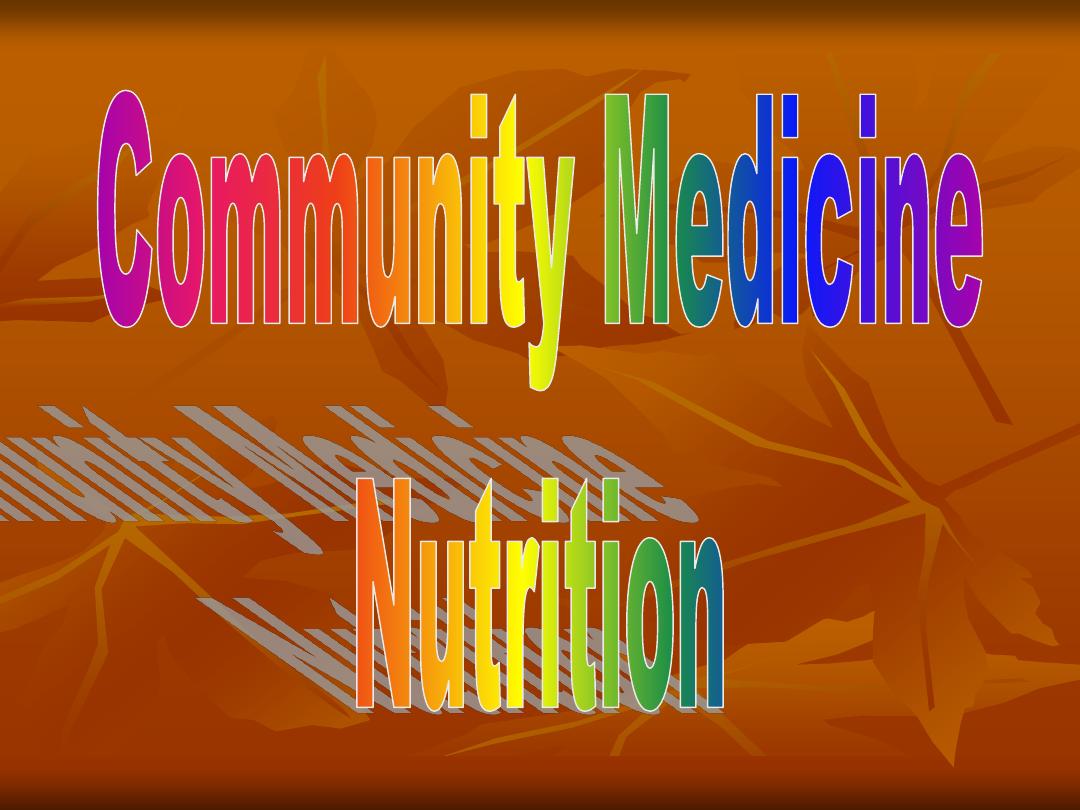
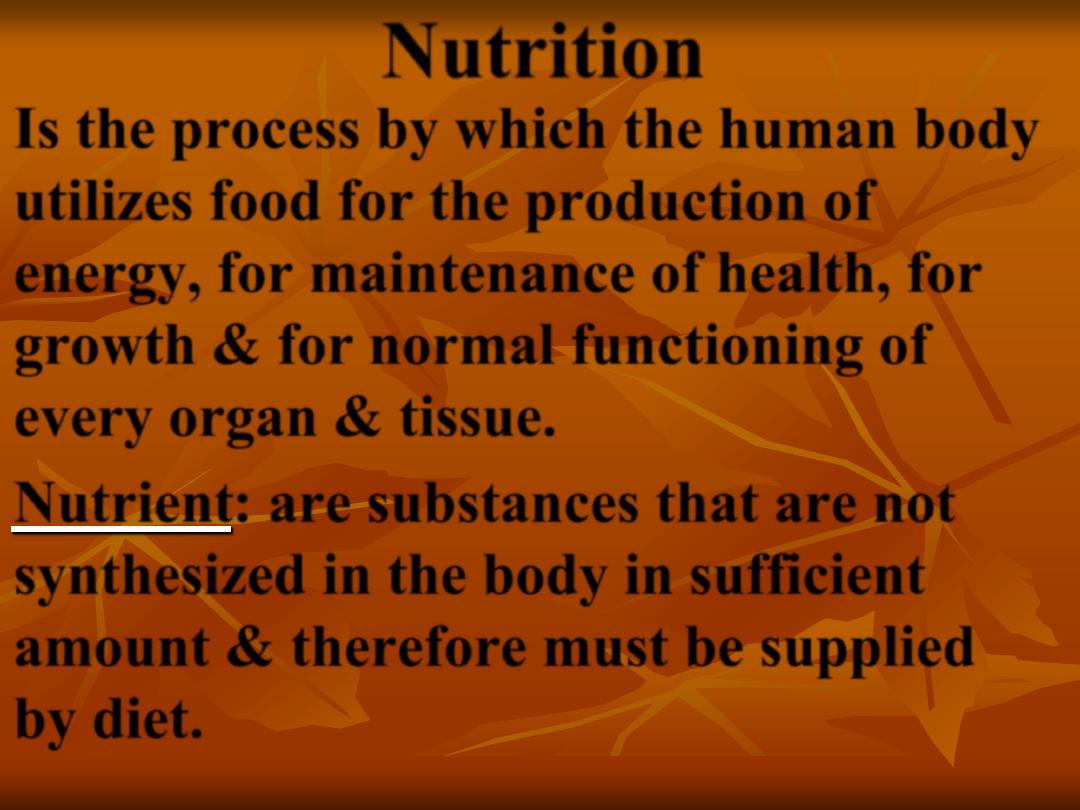
Nutrition
Is the process by which the human body
utilizes food for the production of
energy, for maintenance of health, for
growth & for normal functioning of
every organ & tissue.
: are substances that are not
Nutrient
synthesized in the body in sufficient
amount & therefore must be supplied
by diet.
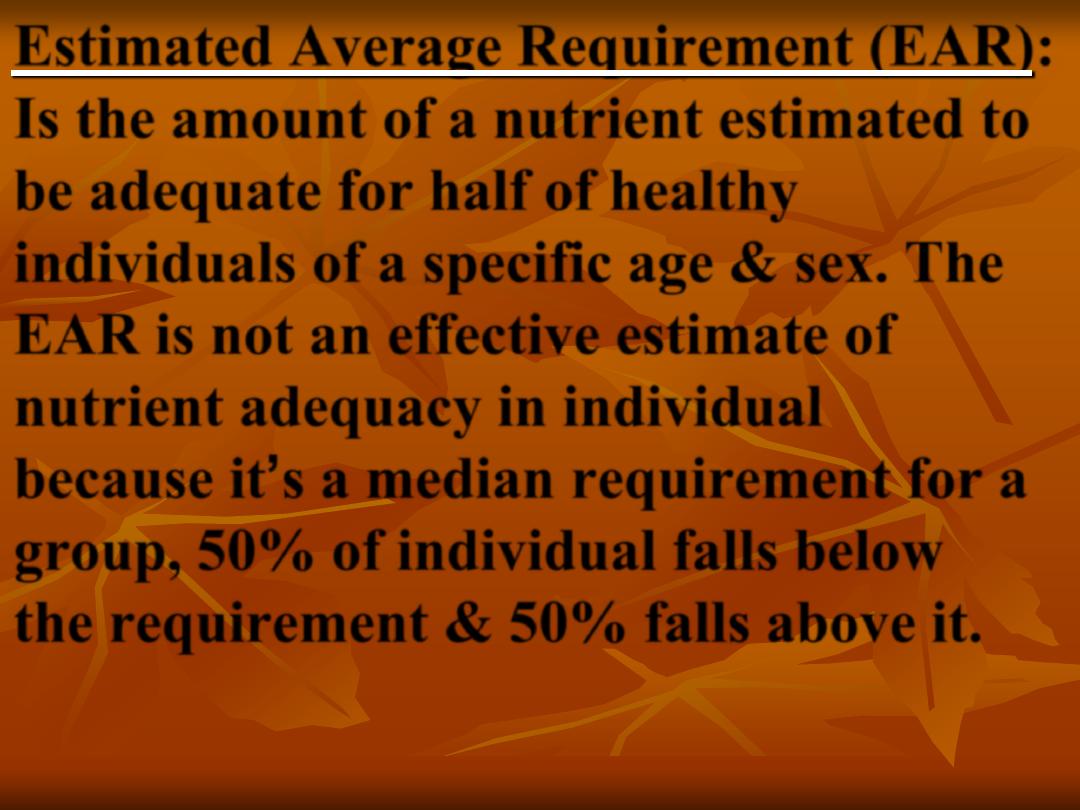
:
Estimated Average Requirement (EAR)
Is the amount of a nutrient estimated to
be adequate for half of healthy
individuals of a specific age & sex. The
EAR is not an effective estimate of
nutrient adequacy in individual
because it
’s a median requirement for a
group, 50% of individual falls below
the requirement & 50% falls above it.
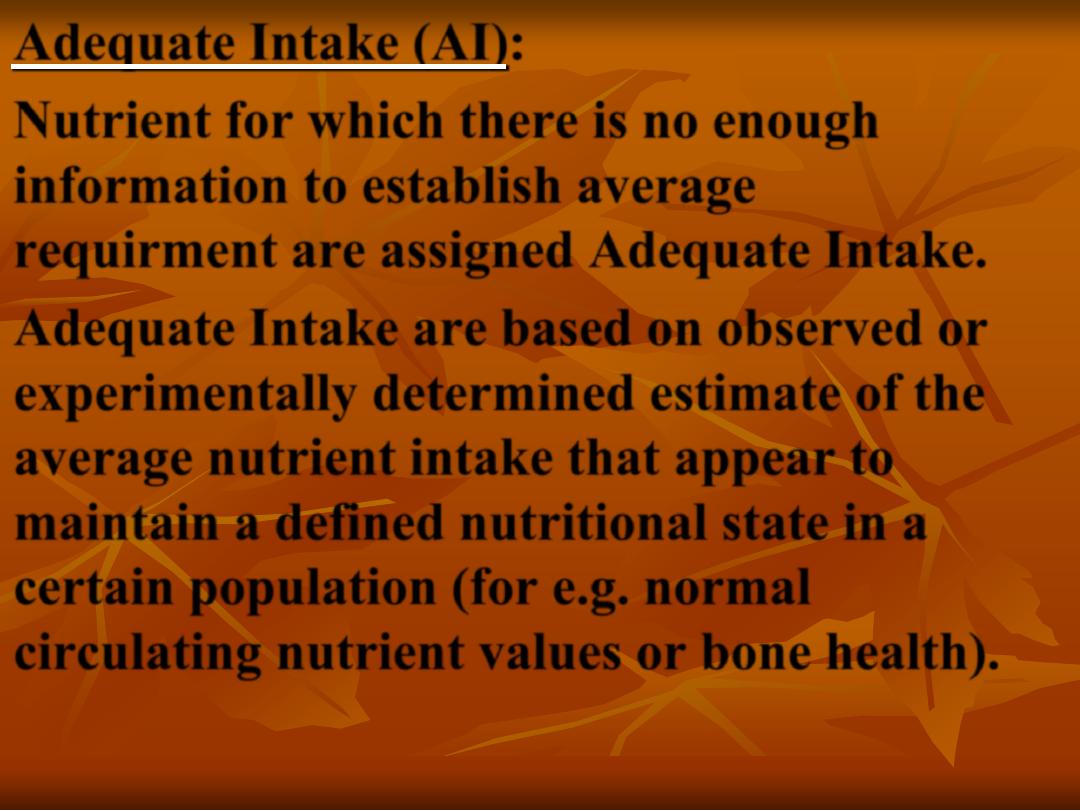
:
Adequate Intake (AI)
Nutrient for which there is no enough
information to establish average
requirment are assigned Adequate Intake.
Adequate Intake are based on observed or
experimentally determined estimate of the
average nutrient intake that appear to
maintain a defined nutritional state in a
certain population (for e.g. normal
circulating nutrient values or bone health).
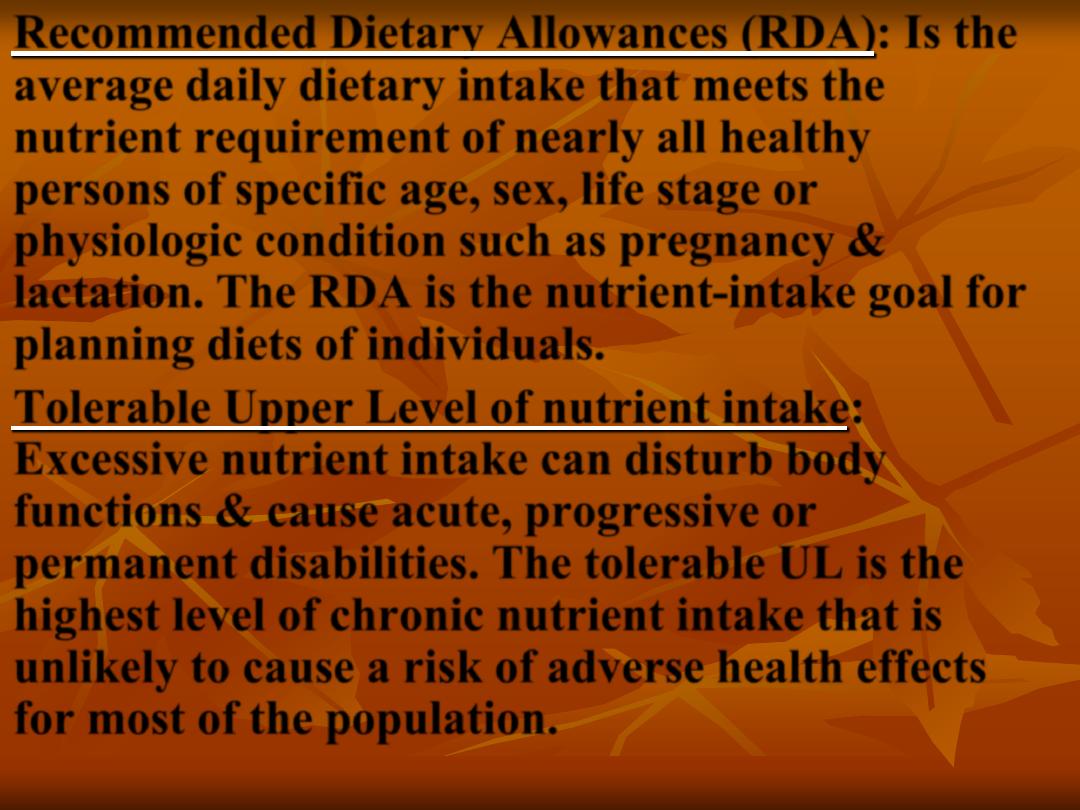
: Is the
Recommended Dietary Allowances (RDA)
average daily dietary intake that meets the
nutrient requirement of nearly all healthy
persons of specific age, sex, life stage or
physiologic condition such as pregnancy &
lactation. The RDA is the nutrient-intake goal for
planning diets of individuals.
:
Tolerable Upper Level of nutrient intake
Excessive nutrient intake can disturb body
functions & cause acute, progressive or
permanent disabilities. The tolerable UL is the
highest level of chronic nutrient intake that is
unlikely to cause a risk of adverse health effects
for most of the population.
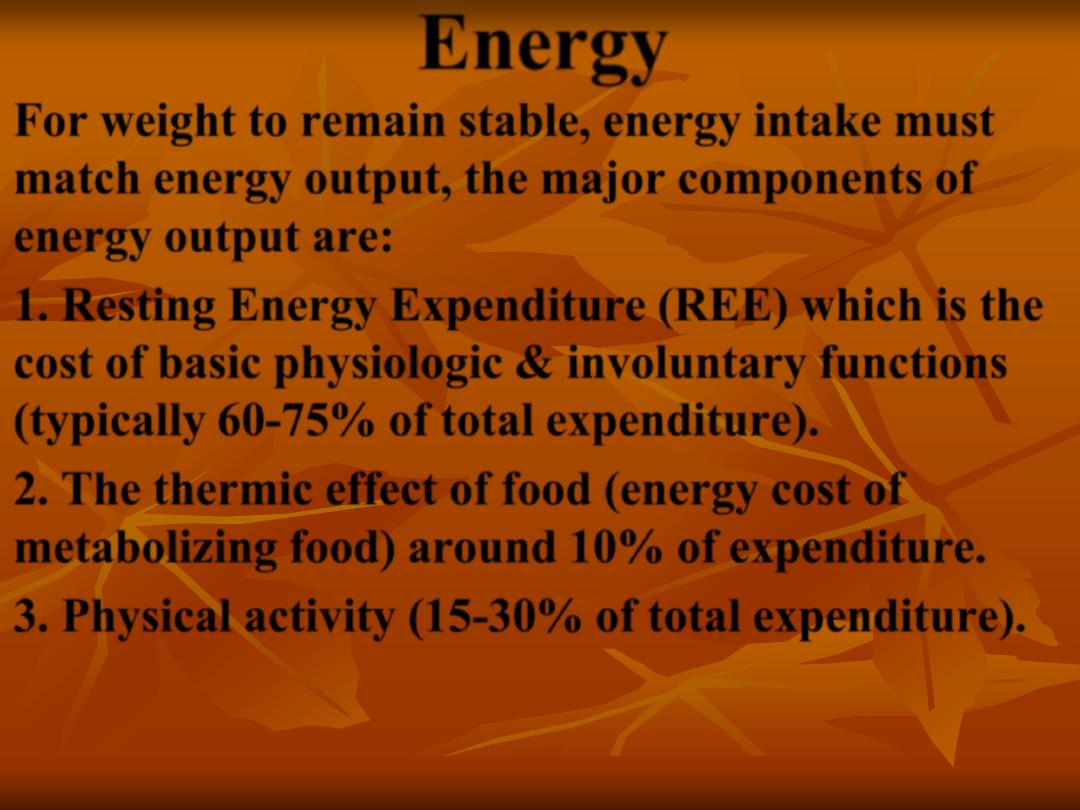
Energy
For weight to remain stable, energy intake must
match energy output, the major components of
energy output are:
1. Resting Energy Expenditure (REE) which is the
cost of basic physiologic & involuntary functions
(typically 60-75% of total expenditure).
2. The thermic effect of food (energy cost of
metabolizing food) around 10% of expenditure.
3. Physical activity (15-30% of total expenditure).
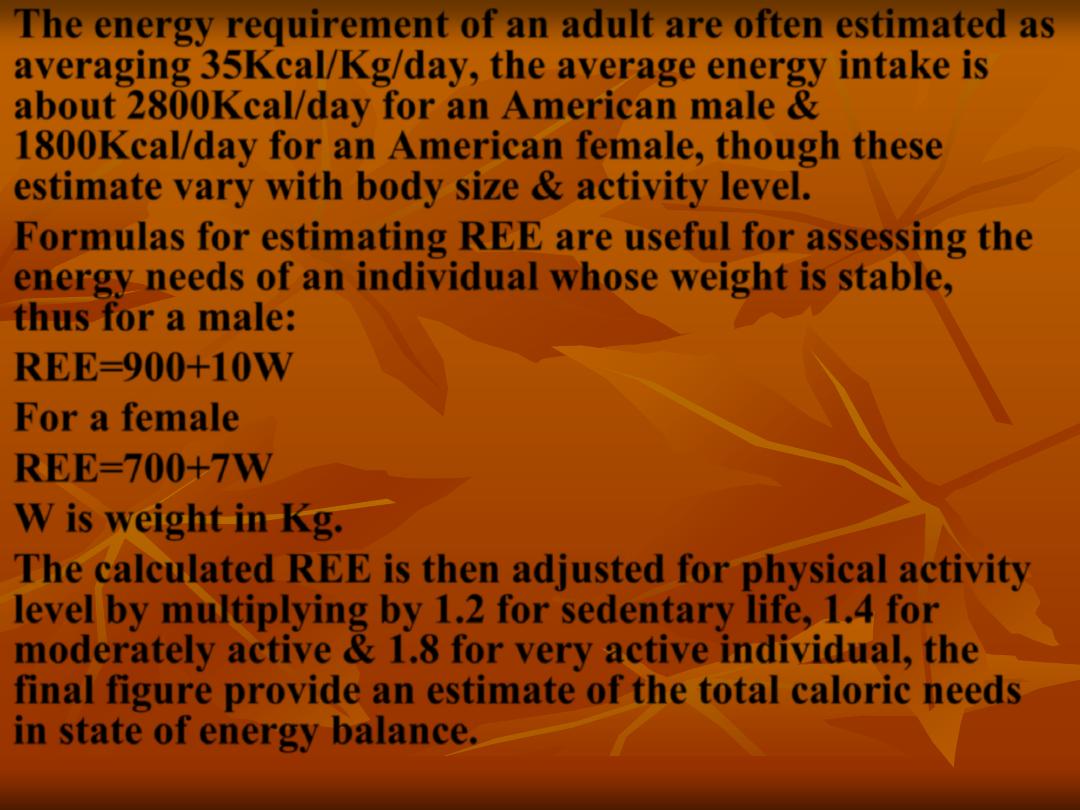
The energy requirement of an adult are often estimated as
averaging 35Kcal/Kg/day, the average energy intake is
about 2800Kcal/day for an American male &
1800Kcal/day for an American female, though these
estimate vary with body size & activity level.
Formulas for estimating REE are useful for assessing the
energy needs of an individual whose weight is stable,
thus for a male:
REE=900+10W
For a female
REE=700+7W
W is weight in Kg.
The calculated REE is then adjusted for physical activity
level by multiplying by 1.2 for sedentary life, 1.4 for
moderately active & 1.8 for very active individual, the
final figure provide an estimate of the total caloric needs
in state of energy balance.
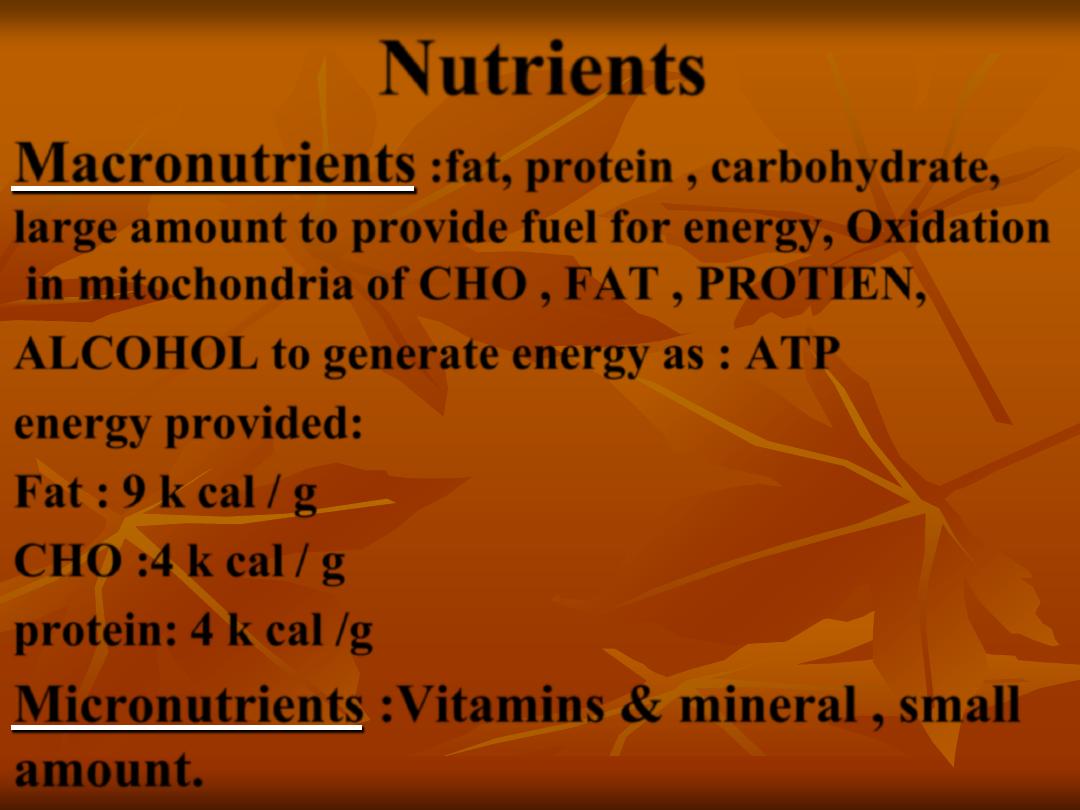
Nutrients
:fat, protein , carbohydrate,
Macronutrients
large amount to provide fuel for energy, Oxidation
in mitochondria of CHO , FAT , PROTIEN,
ALCOHOL to generate energy as : ATP
energy provided:
Fat : 9 k cal / g
CHO :4 k cal / g
protein: 4 k cal /g
:Vitamins & mineral , small
Micronutrients
amount.
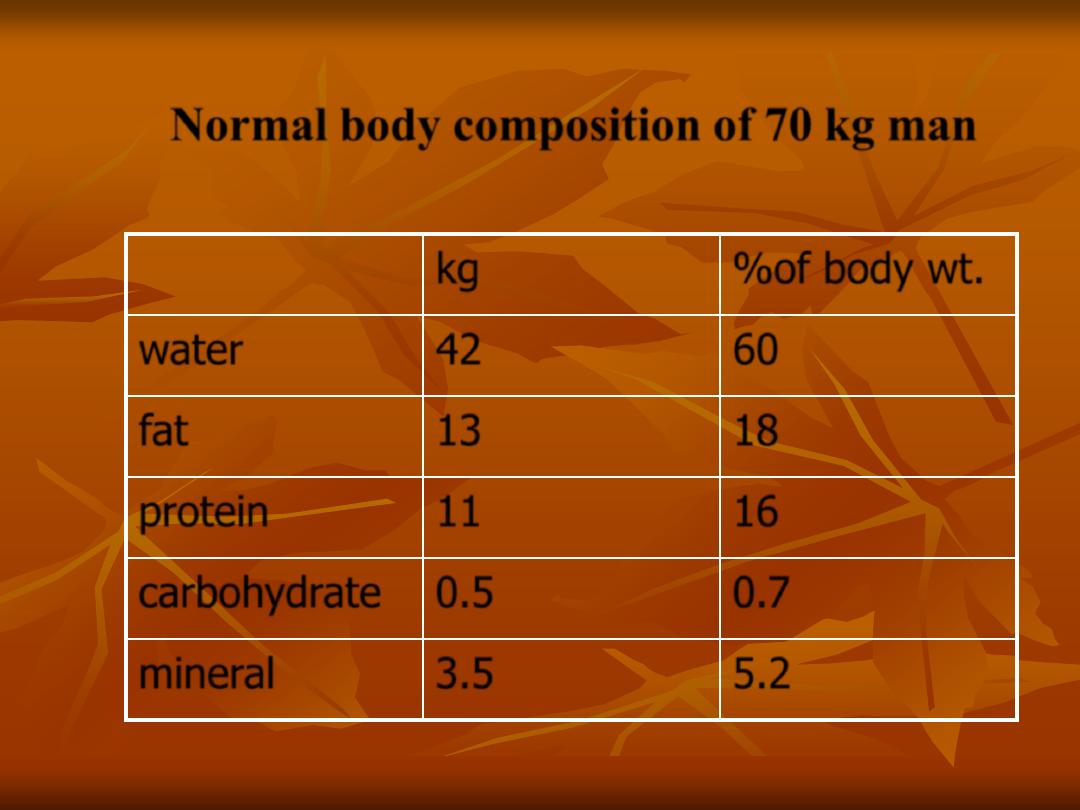
Normal body composition of 70 kg man
kg
%of body wt.
water
42
60
fat
13
18
protein
11
16
carbohydrate
0.5
0.7
mineral
3.5
5.2
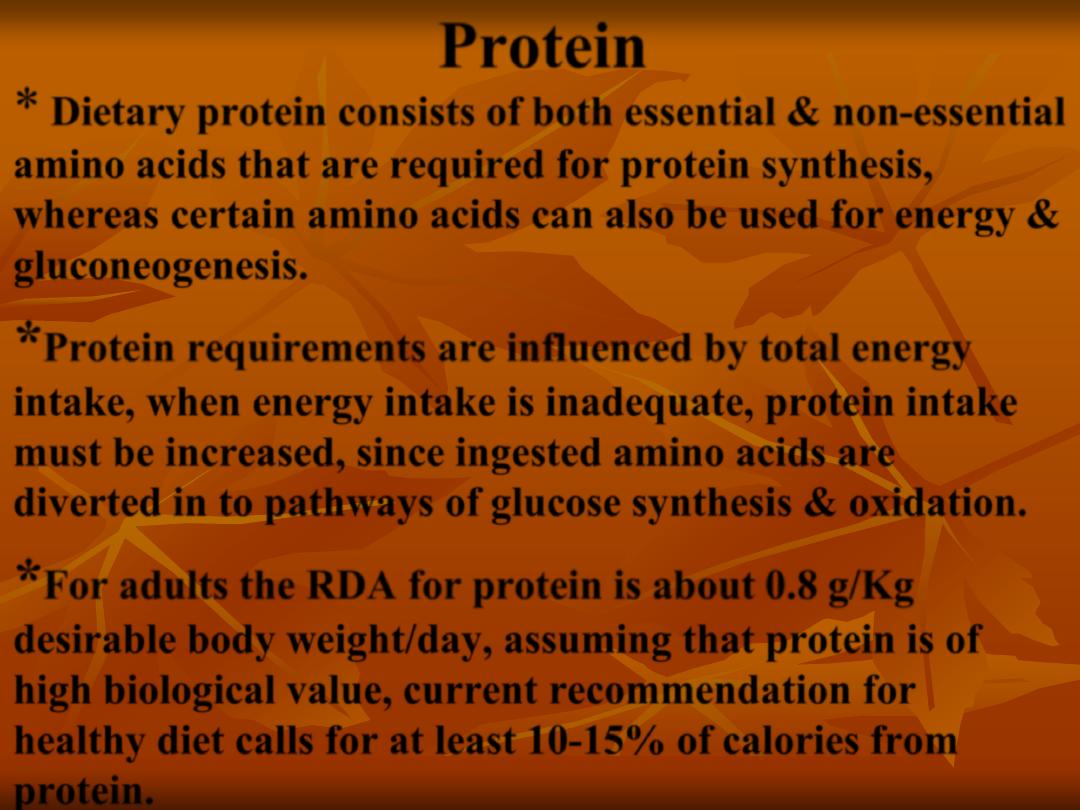
Protein
*
Dietary protein consists of both essential & non-essential
amino acids that are required for protein synthesis,
whereas certain amino acids can also be used for energy &
gluconeogenesis.
*
Protein requirements are influenced by total energy
intake, when energy intake is inadequate, protein intake
must be increased, since ingested amino acids are
diverted in to pathways of glucose synthesis & oxidation.
*
For adults the RDA for protein is about 0.8 g/Kg
desirable body weight/day, assuming that protein is of
high biological value, current recommendation for
healthy diet calls for at least 10-15% of calories from
protein.
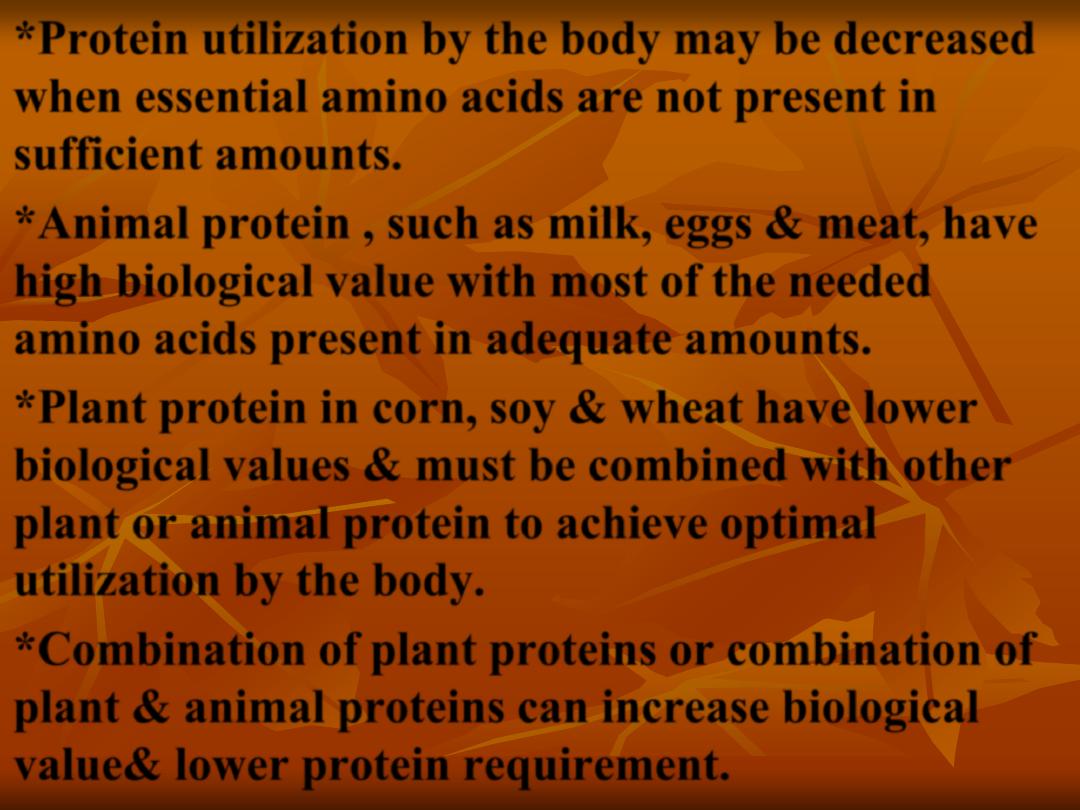
*Protein utilization by the body may be decreased
when essential amino acids are not present in
sufficient amounts.
*Animal protein , such as milk, eggs & meat, have
high biological value with most of the needed
amino acids present in adequate amounts.
*Plant protein in corn, soy & wheat have lower
biological values & must be combined with other
plant or animal protein to achieve optimal
utilization by the body.
*Combination of plant proteins or combination of
plant & animal proteins can increase biological
value& lower protein requirement.
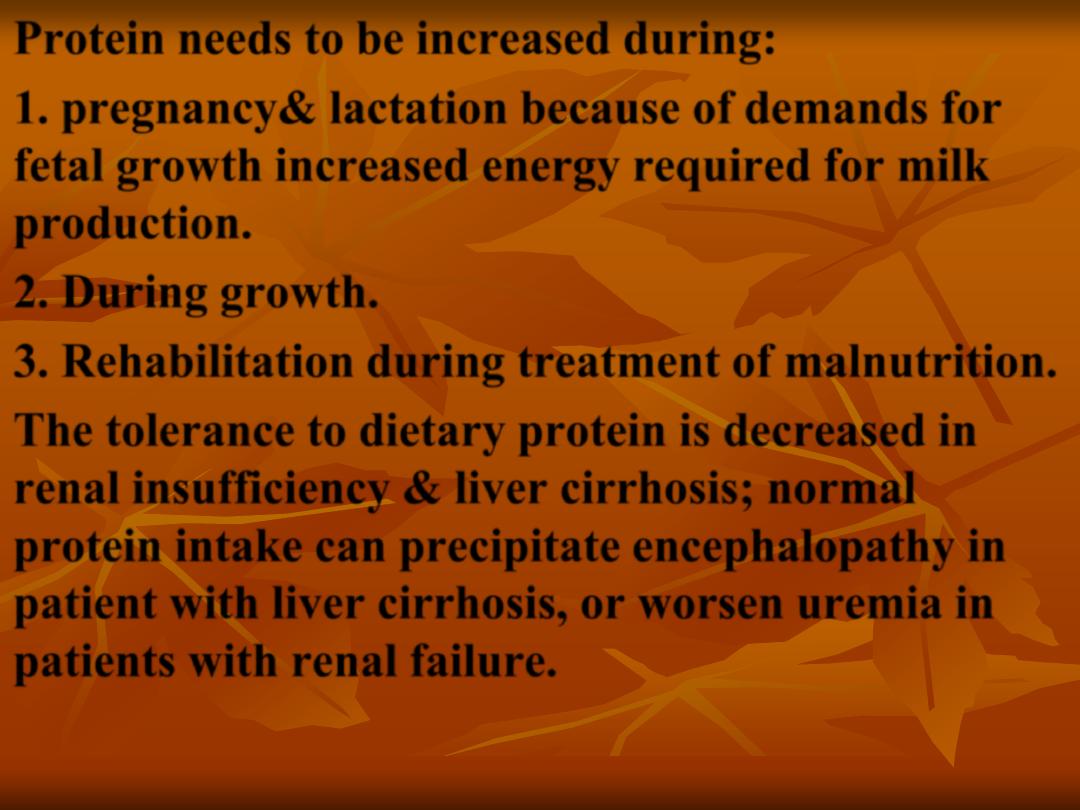
Protein needs to be increased during:
1. pregnancy& lactation because of demands for
fetal growth increased energy required for milk
production.
2. During growth.
3. Rehabilitation during treatment of malnutrition.
The tolerance to dietary protein is decreased in
renal insufficiency & liver cirrhosis; normal
protein intake can precipitate encephalopathy in
patient with liver cirrhosis, or worsen uremia in
patients with renal failure.
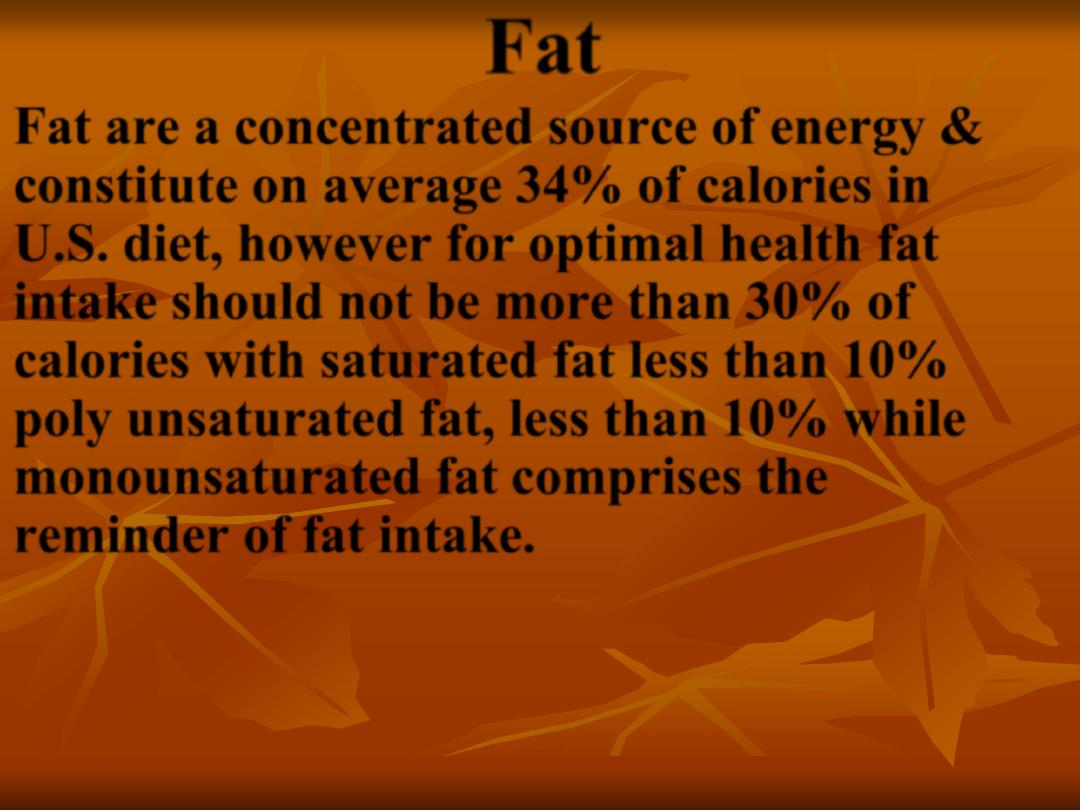
Fat
Fat are a concentrated source of energy &
constitute on average 34% of calories in
U.S. diet, however for optimal health fat
intake should not be more than 30% of
calories with saturated fat less than 10%
poly unsaturated fat, less than 10% while
monounsaturated fat comprises the
reminder of fat intake.
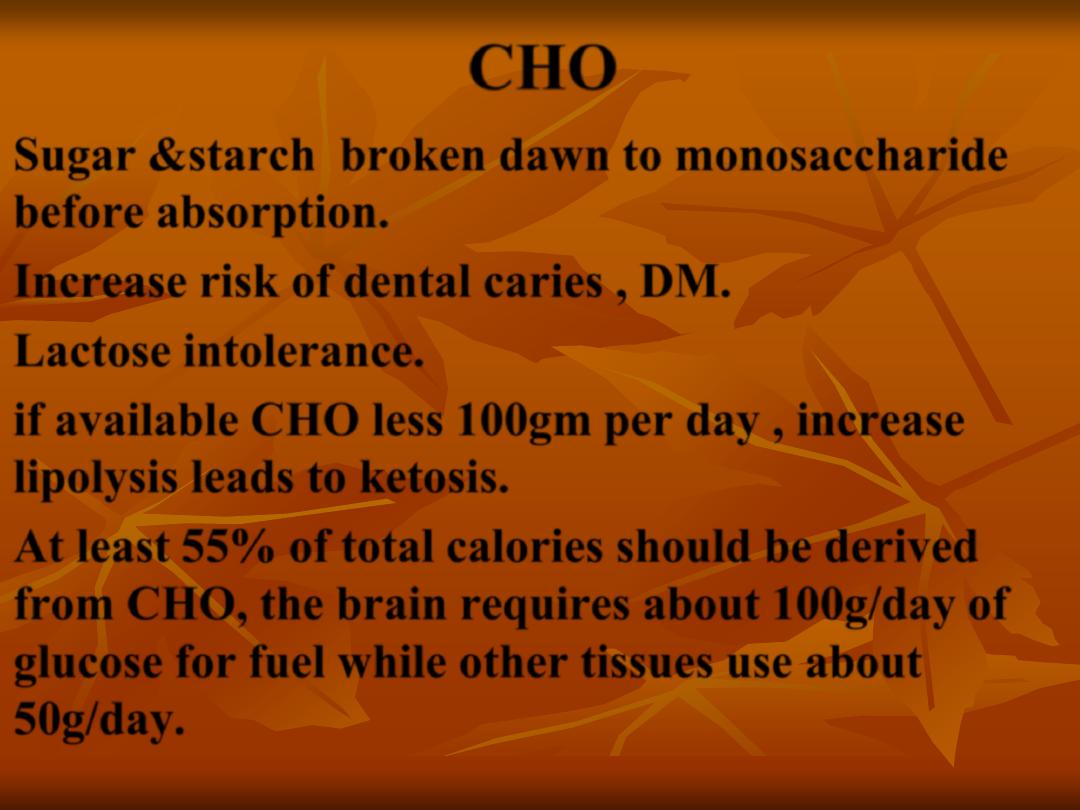
CHO
Sugar &starch broken dawn to monosaccharide
before absorption.
Increase risk of dental caries , DM.
Lactose intolerance.
if available CHO less 100gm per day , increase
lipolysis leads to ketosis.
At least 55% of total calories should be derived
from CHO, the brain requires about 100g/day of
glucose for fuel while other tissues use about
50g/day.
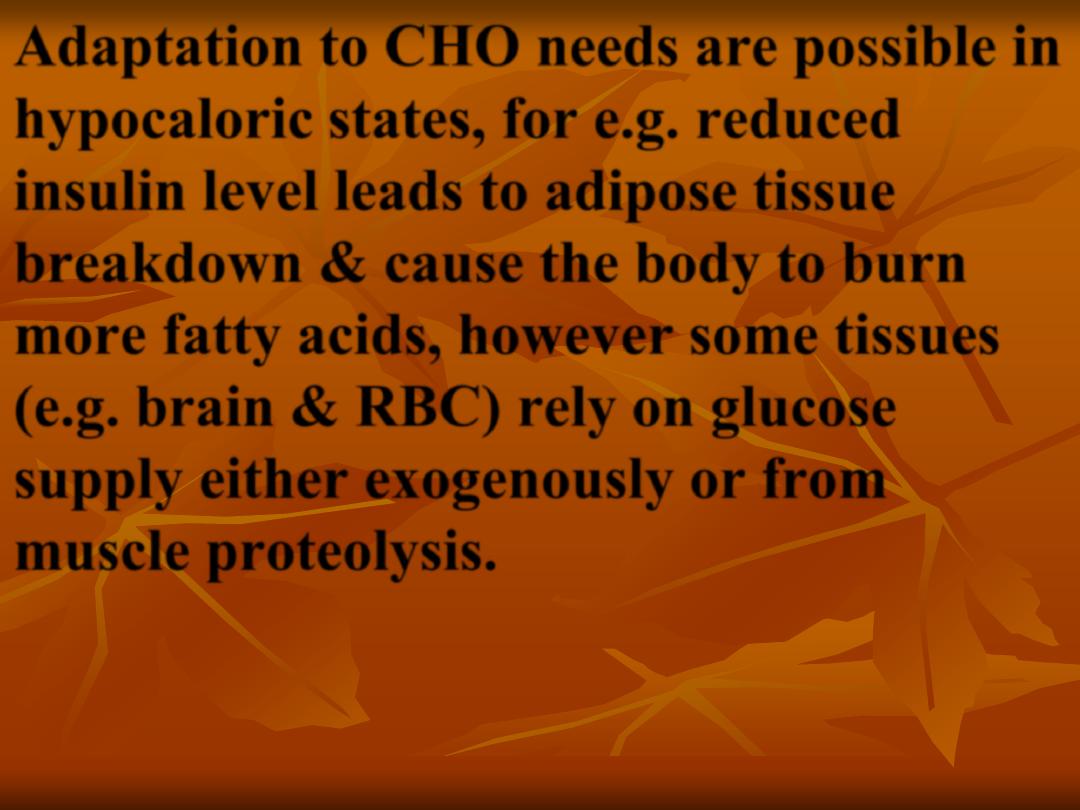
Adaptation to CHO needs are possible in
hypocaloric states, for e.g. reduced
insulin level leads to adipose tissue
breakdown & cause the body to burn
more fatty acids, however some tissues
(e.g. brain & RBC) rely on glucose
supply either exogenously or from
muscle proteolysis.
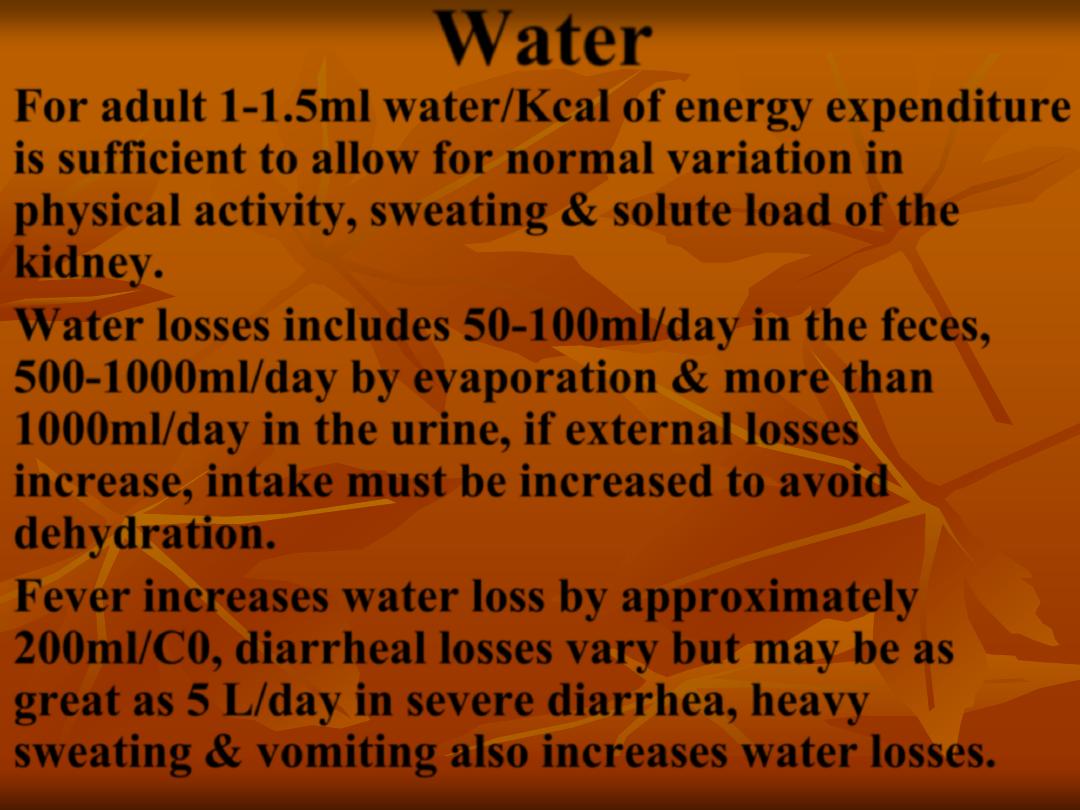
Water
For adult 1-1.5ml water/Kcal of energy expenditure
is sufficient to allow for normal variation in
physical activity, sweating & solute load of the
kidney.
Water losses includes 50-100ml/day in the feces,
500-1000ml/day by evaporation & more than
1000ml/day in the urine, if external losses
increase, intake must be increased to avoid
dehydration.
Fever increases water loss by approximately
200ml/C0, diarrheal losses vary but may be as
great as 5 L/day in severe diarrhea, heavy
sweating & vomiting also increases water losses.
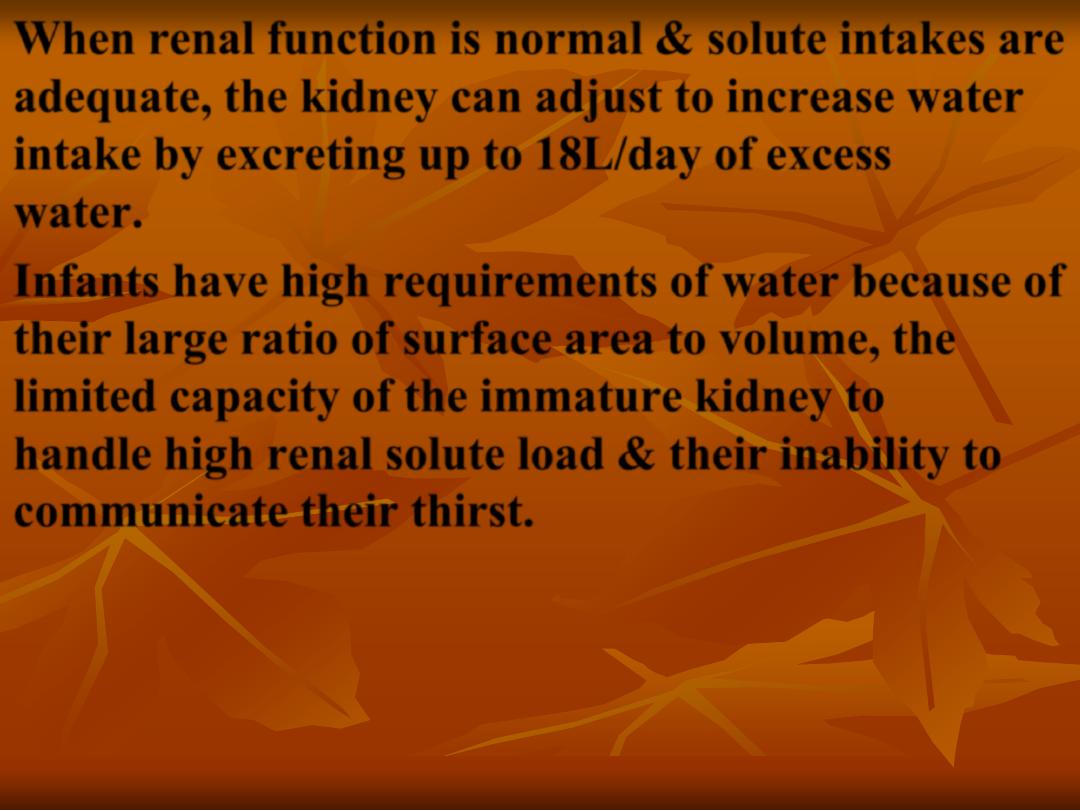
When renal function is normal & solute intakes are
adequate, the kidney can adjust to increase water
intake by excreting up to 18L/day of excess
water.
Infants have high requirements of water because of
their large ratio of surface area to volume, the
limited capacity of the immature kidney to
handle high renal solute load & their inability to
communicate their thirst.
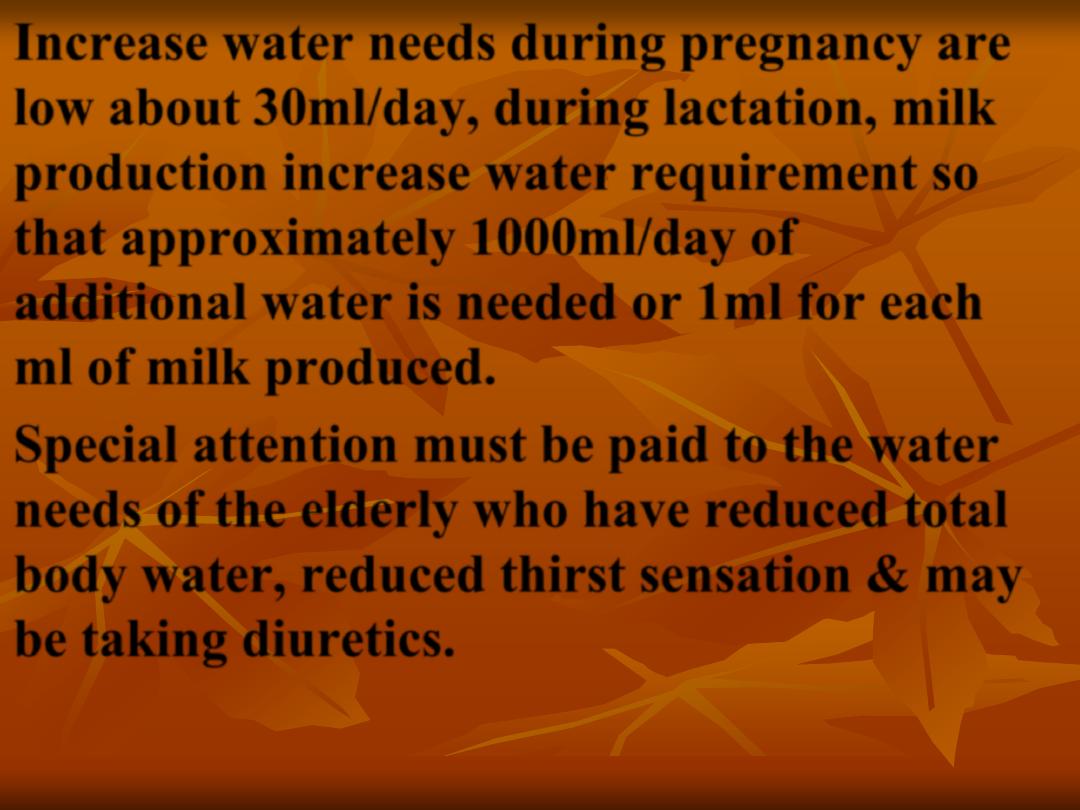
Increase water needs during pregnancy are
low about 30ml/day, during lactation, milk
production increase water requirement so
that approximately 1000ml/day of
additional water is needed or 1ml for each
ml of milk produced.
Special attention must be paid to the water
needs of the elderly who have reduced total
body water, reduced thirst sensation & may
be taking diuretics.
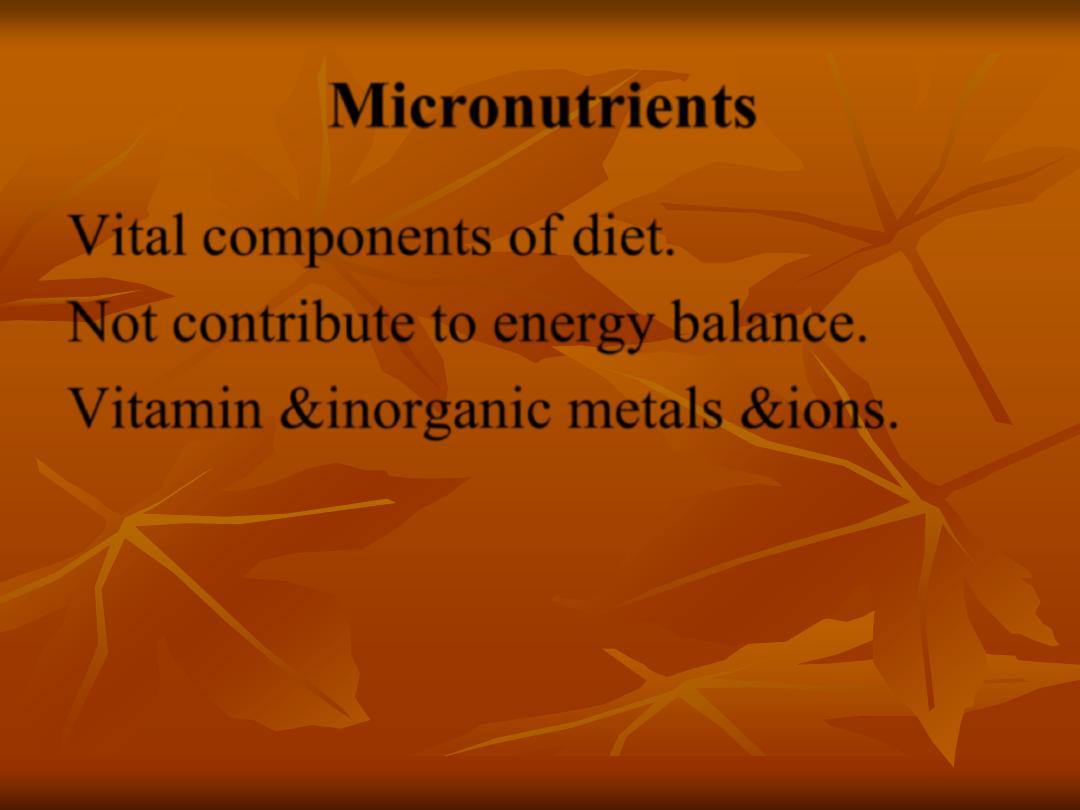
Micronutrients
Vital components of diet.
Not contribute to energy balance.
Vitamin &inorganic metals &ions.
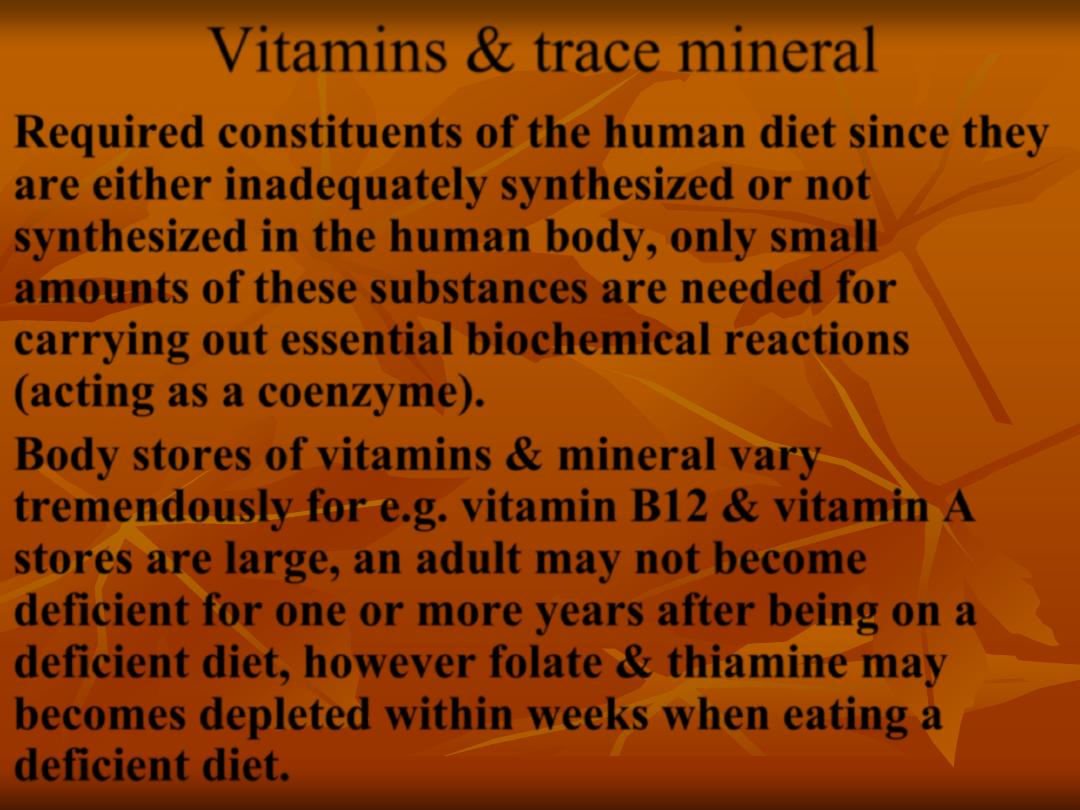
Vitamins & trace mineral
Required constituents of the human diet since they
are either inadequately synthesized or not
synthesized in the human body, only small
amounts of these substances are needed for
carrying out essential biochemical reactions
(acting as a coenzyme).
Body stores of vitamins & mineral vary
tremendously for e.g. vitamin B12 & vitamin A
stores are large, an adult may not become
deficient for one or more years after being on a
deficient diet, however folate & thiamine may
becomes depleted within weeks when eating a
deficient diet.
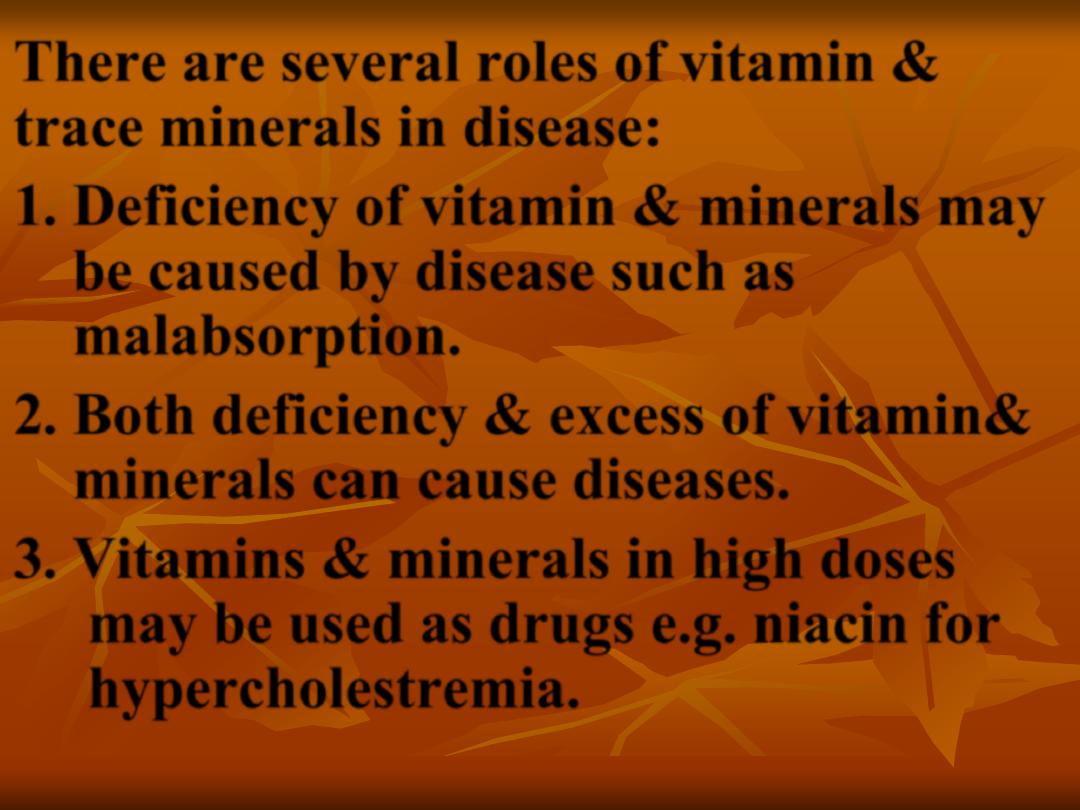
There are several roles of vitamin &
trace minerals in disease:
1. Deficiency of vitamin & minerals may
be caused by disease such as
malabsorption.
2. Both deficiency & excess of vitamin&
minerals can cause diseases.
3. Vitamins & minerals in high doses
may be used as drugs e.g. niacin for
hypercholestremia.
